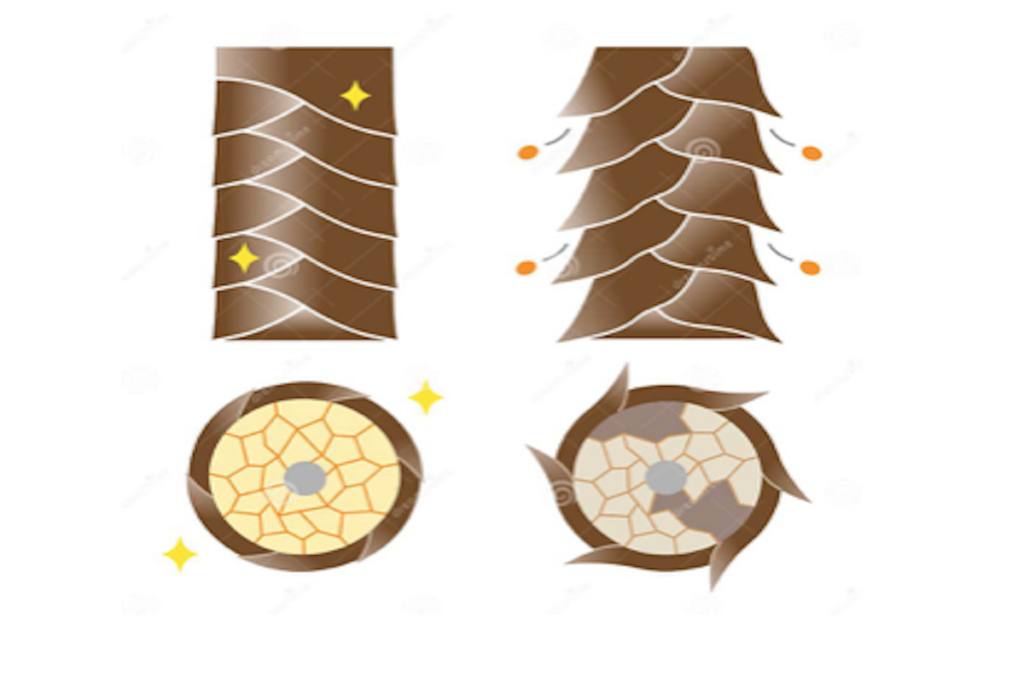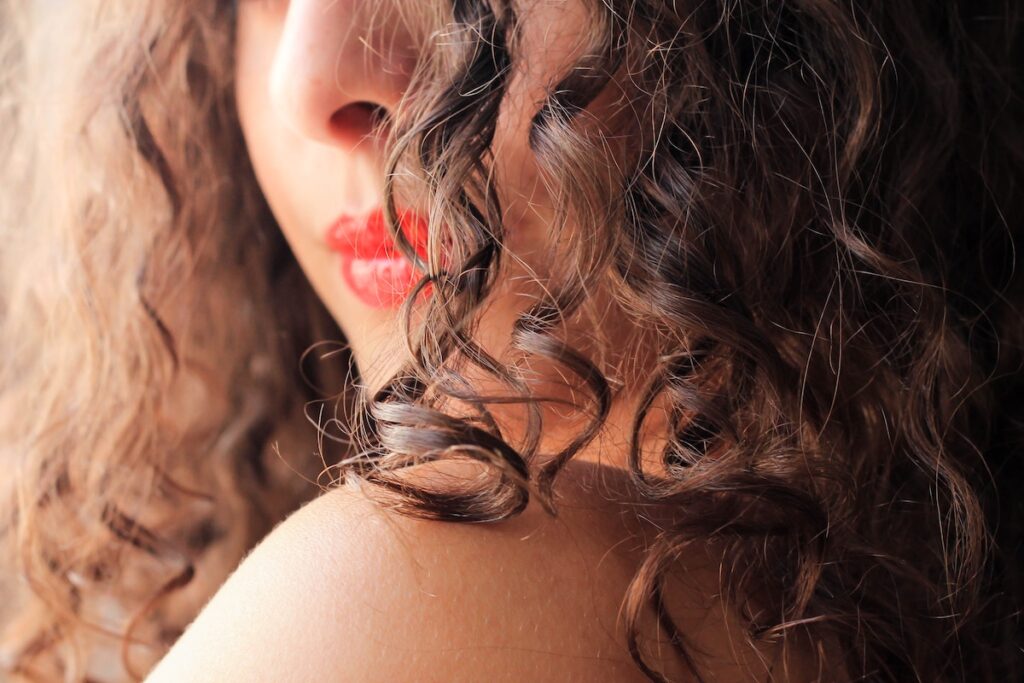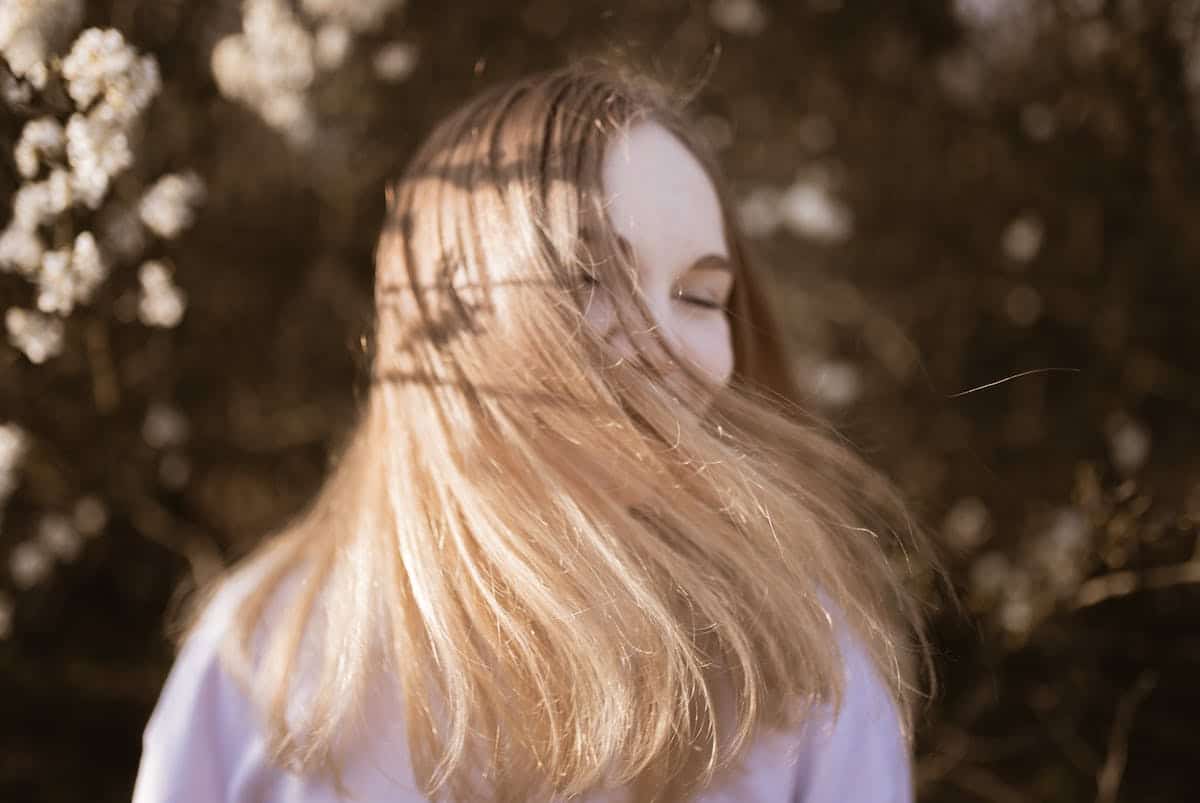The hair fibre is the scientific term for what we commonly call hair. It is the product of a complex biology and the reflection of our health. Each hair is made up of several layers that work together to give the hair strength, elasticity and shine. Find out all you need to know about the hair fibre, its composition, its different types, and how it reacts to the countless treatments and traumas we give it.
What is hair fibre?
La hair fibre is the anatomical entity of the hair that grows from the hair follicles anchored in our scalp. It is made up mainly of keratin, a protein rich in sulphur, which gives it the following properties resistance and elasticity.
This fibre is important not only for aesthetic reasons, because it makes a significant contribution to our appearance and the way we are perceived by others, but also for reasons that are often overlooked. biological and psychological :
- On the biological level, hair plays a role in the scalp protection against UV rays. They also help to regulate body temperature thanks to their insulation capacity and sweat management.
- On the psychological level, hair can be seen as a reflection of our personal and cultural identity, influencing the way in which we self-esteem and often serve as a tool for self-expression.
The hair fibre is a complex structure composed of three main layers : the cuticle, cortex and medulla. The different elements of the hair fibre contribute to its overall health by working together. The cuticle protects the cortex, which must remain intact for the hair to retain its structural strength.
The cuticle
What is hair fibre made of?
La cuticle is the outer layer of the hair fibre. It is made up of flat, overlapping cells resembling scales, which act as a protective barrier for the cortex. The cuticle reflects light, giving the hair its radiance. It also helps prevent damage caused by environmental factors such as the sun, wind and chemicals. When the cuticle is smooth and intact, hair looks healthy and shiny. Conversely, a damaged cuticle can leave hair dull and prone to frizz.

Cuticle in section: the scales are closed, the hair is smooth and shiny.
Conversely, the scales are open and the hair is dull and weakened
The cortex
Located under the cuticle, the cortex makes up the majority of the hair's mass and contains fibres of keratin and pigments that give hair its colour. The force and hair elasticity come mainly from the cortex, which contains special chemical bonds, such as disulphide bridges.
These bonds determine the texture of the hair (straight, wavy or curly) and its strength. The health of the cortex is crucial in preventing breakage and split ends.
The medulla
The medulla, or marrow, is the innermost layer. It is not always present and its role is less well understood. Some experts suggest that it may play a role in regulating body temperature.
Good to know: hair care to maintain hydration and protect the fibre from the sun's harmful environmental damage are essential for preserving the integrity of these components. Products such as hair conditioners protein masks and oils can help strengthen the cuticle and repair the cortex, resulting in visibly healthy hair.
What are the different types of hair fibre?
Types of hair fibre are generally classified according to their shape and texture. There are four main categories:


- Straight hair (Type 1) : the fibres are generally straight and smooth, with a tendency to be greasy as the sebum produced by the scalp spreads easily along the length of the fibre.
- Wavy hair (Type 2) : they have a texture that varies from a light wave to more pronounced waves. They are neither flat nor very curly, and can often be subject to frizz.
- Curly hair (Type 3) : the fibres form distinct curls or spirals. This type of hair can be prone to dryness and lack of moisture, as it is harder for sebum to distribute itself along the hair fibre.
- Frizzy hair (Type 4) : they are characterised by very tight curls and a texture that can appear very dense. This type of hair is often very fragile and dry because sebum is poorly distributed along the hair fibre.


To identify your hair fibre type, you can observe the natural shape of your hair after washing and drying it without the use of styling products or tools. Hair can also be analysed by a professional, who will take other factors into account, such as the hair's porosity, the density, and elasticity.
How do you look after your hair fibre?
To keep your hair healthy and shiny, it's vital to have the right care routine. It starts with Moisturise your hair regularly, by choosing moisture-retaining conditioners and masks, especially for curly or frizzy textures.
When washing, it is advisable to choose gentle shampoos that cleanse without removing sebum from the scalp, and to space these washes out to preserve the hair's natural moisture.
Protecting your hair from heat is also vital, and you need to limit the use of heating appliances and don't forget to apply a skincare product before use.
The detangling must be carried out gently, using a wide-tooth comb or your fingers to avoid weakening the hair fibre.
The regular visits to the hairdresser to eliminate split ends encourage healthy hair growth.
In addition, a protein-rich diet, with vitamins and minerals is a fundamental pillar of hair health, as is the reduction of aggressive chemical treatments such as colours or perms.
Finally, it's important to use styling techniques that don't put unnecessary stress on the roots, to avoid breakage or "flaking". hair loss. By following these simple steps, you can maintain the integrity and beauty of your hair over time.
What are the signs of damaged hair fibre?
Damaged hair fibres can manifest themselves in a number of ways, such as :
- From dull hair and lack of shine can indicate a damaged cuticle, which no longer reflects light effectively.
- An rough texture and split ends are also indicators that the hair is weakened and possibly brittle.
Other symptoms include reduced elasticity, where the hair breaks easily when pulled or styled, and excessive frizz, a sign that the hair fibre is not retaining moisture as it should. Hair that tangles easily and is difficult to untangle without breaking can also signal damage.
In addition, a change in the way the hair reacts to usual products or increased difficulty in styling can be a sign of a change in the health of the hair fibre.
Recognising signs of damaged hair fibre is crucial to taking the right steps to restore the health of your hair. If you notice a loss of shine, a rough texture, breakage, split ends or any other worrying changes, it's a good idea to take proactive measures.
A hair diagnosis can offer a precise assessment of the condition of your hair and determine the underlying cause of the damage. By taking this step, you can adopt a targeted care routine that nourishes, protects and revitalises your hair, allowing it to regain its vitality and shine.

